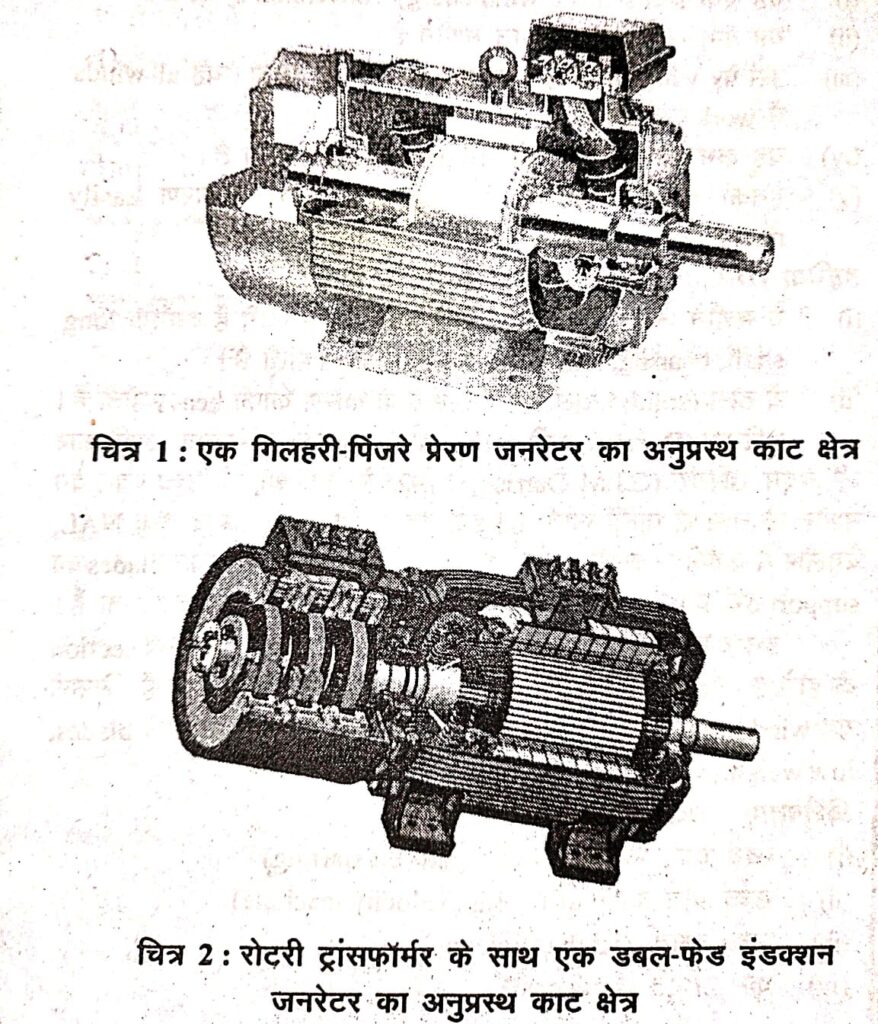Friends, today in this article we will learn about double-fed induction generator. I am going to give information about all this in a very good way. So let’s start.
Doubly-fed induction generator
Today, while conventional power generation systems use synchronous machines, modern wind power systems extensively use induction machines in wind turbine applications. These induction generators are of two types—fixed speed induction generators with squirrel cage rotors and doubly-fed induction generators (DFIGs) with coiled rotors. The cross-sectional area diagrams of a squirrel-cage induction generator and a doubly-fed induction generator are shown in Figure 1 and Figure 2.

When the stator is supplied with three-phase AC power, a rotating magnetic field is set up in the airgap. If the rotor rotates at a speed different from the synchronous speed, a slip occurs and the rotor circuit is energized. Generally, induction machines are simple, reliable, inexpensive, and well built. They have a high degree of damping and are able to absorb fluctuations in rotor speed. Induction machines, however, draw reactive power from the grid and thus require the use of power capacitors or power converters in some reactive components. For constant speed induction generators, the stator is connected to the grid through a transformer and the rotor is connected to the wind turbine through a gearbox. The rotor speed is assumed to be fixed. As of 1998 most wind turbine manufacturers were building fixed-speed induction generators of 1.5 MW and less. These generators are fitted with three-stage gearboxes typically operating at 1800 rpm for an 80 Hz utility grid.
SCIG can be used in variable-speed wind turbines. SCIG is used to control synchronous machines, however, the output voltage cannot be controlled and reactive power needs to be supplied externally. Clearly, fixed-speed induction generators are limited to operating only within a very narrow range of asynchronous speeds. Other disadvantages of these machines related to size, noise, low efficiency and reliability have not led to much success.
What did you learn today :-
Now you must have known about double-fed induction generator and you must have got the answer to all these questions very well.
I hope you liked the information given by me, if you have any question/suggestion in your mind, then you can tell me by commenting below, I will definitely reply to your comment. If you liked this post, then you can also share it with your friends and relatives.
